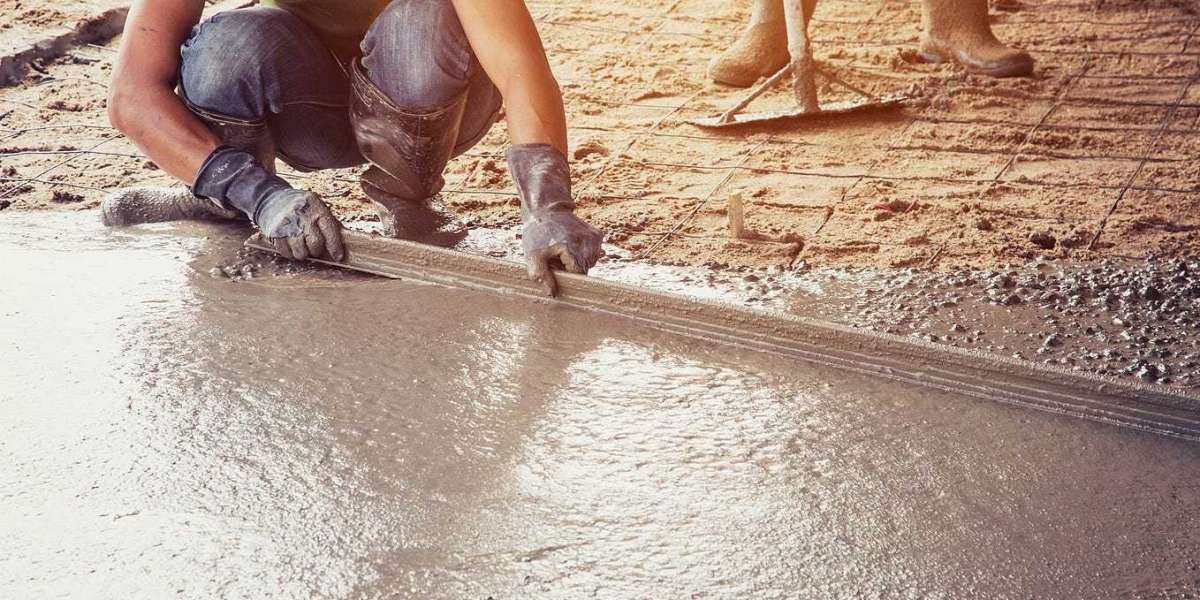Concrete is the silent foundation of our daily lives. It’s the driveway you park on every morning, the floor your business operates on, and the patio where you relax on summer evenings. When it’s done right, it’s incredibly durable and reliable. But when concrete work is done poorly, the problems are hard to ignore. You’ve likely seen the results: a driveway marred by wide, unsightly cracks, a sidewalk slab that has settled and become a trip hazard, or a stamped patio where the pattern has faded into a blur. These issues are more than just cosmetic. They represent a failure in the process—a process that is equal parts art and science. Understanding what goes into professional Concrete Work is the key to ensuring your investment provides decades of trouble-free service, whether for your home or your commercial property.
The High Cost of Cutting Corners: Common Concrete Failures
Why does one concrete slab last fifty years while another fails in five? The answer almost always lies in the preparation, the mix, and the finishing. Amateur or rushed concrete jobs lead to a host of predictable and costly problems.
- Cracking: While hairline cracks (often called "control joints") are planned and normal, large, random cracks are a sign of trouble. This can be caused by improper sub-base preparation—pouring concrete on soft, unstable ground that shifts over time. It can also result from a poor water-to-cement ratio in the mix; too much water weakens the concrete dramatically, making it prone to shrinkage and cracking as it cures.
- Spalling and Scaling: This is when the surface of the concrete flakes or peels away. It’s often a result of improper finishing. If water is forced to the surface during troweling (a process called "bleeding") or if the surface freezes before it has fully cured, the top layer becomes weak and fails. For a business owner with a parking lot, this leads to a dusty, unprofessional appearance and potential liability from loose debris.
- Uneven Settlement: When the ground underneath the concrete wasn’t compacted correctly, entire sections can sink or tilt. This creates tripping hazards on walkways and prevents doors from opening and closing properly in a warehouse or storefront. Fixing this isn’t a simple patch job; it often requires full demolition and replacement.
- Discoloration and Staining: An inconsistent mix or the use of different batches can lead to a blotchy, uneven color. For a homeowner who paid for a decorative stained patio, this is a devastating outcome. It screams of unprofessionalism and ruins the aesthetic appeal of the entire space.
These failures are frustrating because they are largely preventable. They occur when the complexity of concrete is underestimated.
The Professional Process: A Blend of Science and Skill
Professional concrete contractors don't just pour mud and smooth it out. They follow a meticulous, multi-stage process designed to engineer longevity and beauty into every project. This is what you are truly investing in.
Stage 1: Site Preparation and Formwork (The Unseen Foundation)
This is the most critical stage. The old adage "a project is only as good as its foundation" is literal here.
- Excavation and Grading: The pros first excavate to the proper depth. Then, they ensure the site is graded for positive drainage. You never want water to pool against your foundation or on your patio.
- Sub-Base Compaction: Here, they install and mechanically compact a base of gravel or aggregate. This stable, well-drained layer prevents future settling and cracking. A compacted sub-base is non-negotiable for any lasting concrete work.
Stage 2: The Concrete Mix and Pour (The Right Recipe)
Not all concrete is the same. A professional selects the right mix design for the job.
- Mix Design: A slab for a heavy truck driveway needs a different strength (PSI) and aggregate size than an interior floor or a decorative walkway. Professionals understand these specifications and often use fibermesh reinforcement in the mix to control plastic shrinkage cracking.
- The Pour and Placement: The concrete must be placed efficiently and not from too high of a drop to prevent the aggregate from separating. It’s then consolidated using vibratory tools to remove air pockets, which creates a denser, stronger final product.
Stage 3: Finishing and Curing (The Art of Perfection)
This is where skill meets the material. The timing and technique are everything.
- Finishing Techniques: After the concrete is leveled (screeded), pros begin the finishing process. This can involve floating to create a smooth surface, edging to create clean lines, and applying a broom finish for slip resistance. For stamped concrete, this is when colored hardeners are applied and the pattern is imprinted with specialized mats.
- Control Joints: To control where the concrete cracks (as it inevitably will shrink), professionals cut or tool control joints at strategic intervals. These planned, straight lines are far preferable to random, jagged cracks.
- Curing—The Secret Ingredient: This is the step amateurs most often skip. Curing is not drying; it’s the process of maintaining moisture within the concrete to allow the chemical reaction (hydration) to continue for days. Professionals cure concrete by spraying it with a curing compound that seals in moisture or by covering it with wet burlap. Proper curing is what gives concrete its full strength and durability. Without it, the surface remains weak and dusty.
The Tangible Benefits of Professional Concrete Work
Investing in a professional contractor pays dividends for years to come, offering benefits that go far beyond a simple slab of gray.
Unmatched Durability and Longevity
A professionally installed concrete driveway, sidewalk, or floor can easily last 30 years or more with minimal maintenance. It can withstand heavy traffic, freeze-thaw cycles, and the general wear and tear of daily life. This durability translates directly into cost savings, as you avoid the expensive and disruptive need for premature repairs or total replacement.
Enhanced Safety and Liability Protection
For a business, a cracked or uneven sidewalk is a lawsuit waiting to happen. For a homeowner, it’s a danger to family and guests. Professional installation ensures a level, slip-resistant surface that mitigates these risks. Proper drainage design also prevents the formation of dangerous ice patches in winter.
Increased Property Value and Curb Appeal
First impressions matter. A beautifully finished concrete driveway or a custom-stamped patio significantly boosts your home’s curb appeal and perceived value. For a commercial property, a well-maintained parking lot and entryway signal professionalism and attention to detail, making a positive impression on clients and customers from the moment they arrive.
Design Versatility and Aesthetic Appeal
Modern concrete is not just utilitarian. Through techniques like staining, stamping, polishing, and exposing the aggregate, concrete can be transformed to look like natural stone, tile, or brick at a fraction of the cost. This allows for incredible customization, enabling you to create a unique look that complements your home’s architecture or your business’s brand.
Your Project, Done Right: A Final Thought
Whether you're a homeowner dreaming of a new outdoor living space or a business owner needing a durable, low-maintenance floor, concrete is a superb choice. But its quality is entirely dependent on the skill of the installer. The difference between a problem and an asset lies in the hands of the professional you hire.
When seeking a contractor, look for one with a proven portfolio, solid references, and a clear, detailed contract. They should be able to explain their process, from sub-base preparation to curing methods. Don't base your decision on price alone; the lowest bid often reflects a shortcut in one of these critical stages.
By choosing a true professional, you are not just paying for concrete. You are investing in peace of mind, knowing that your project will be built to last. You are ensuring that the Concrete Work on your property will be a source of pride and functionality for decades, not a recurring source of headaches and repair bills.








